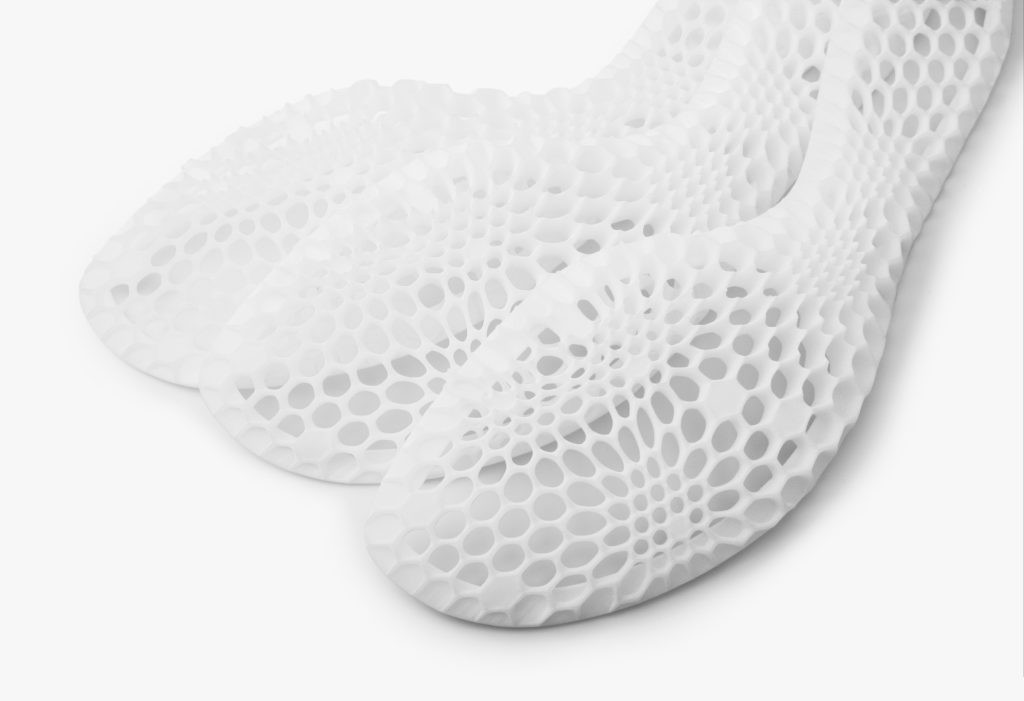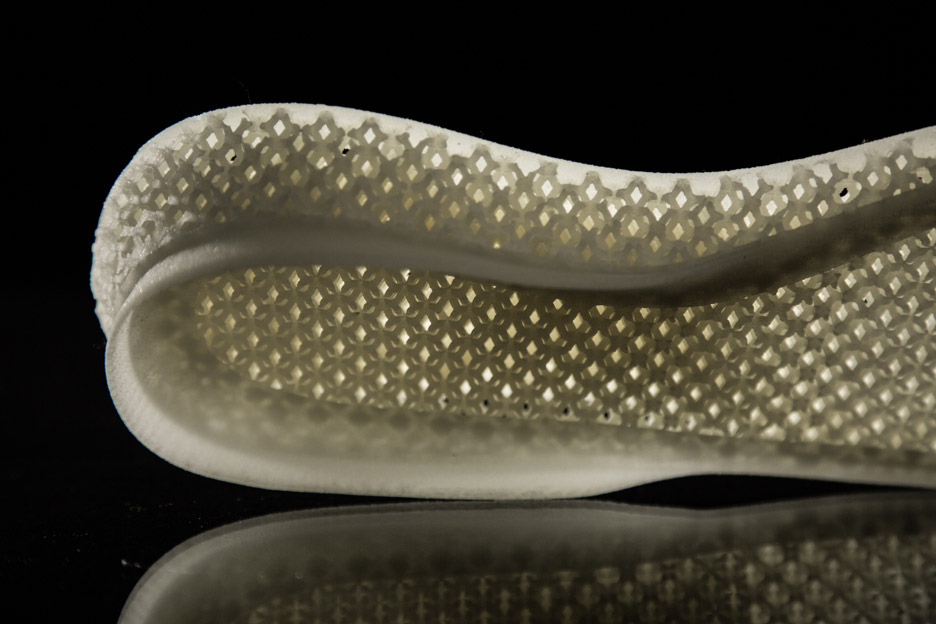Check out Nike’s crazy new machine-designed track shoe
THE SPIKE PLATE on Nike’s Zoom Superfly Elite—one of Nike’s new track shoes for this summer’s Olympics—looks surprisingly glam-rock, for a piece of athletic wear. It’s metallic, bluish-purple, and sports an amorphous, latticed spike plate.

Margaret Rhodes, Wired July 20, 2016
The bizarre design looks like a piece of coral mated with a disco ball, but its performance benefits are incredible. It can shave a runner’s 100-meter-dash time down by more than a tenth of a second—enough time to turn a fourth-place finisher into a gold medalist.
The Zoom Superfly Elite spike plate is all one piece; the spikes aren’t screwed in, like they are with traditional sprinting shoes. The webbed structure also defies any kind of grid or obvious unit of measurement. The cells seem to shrink and swarm around the outsides and arch of the foot, and expand around the ball and heel areas.
These almost alien looks are the result of more than four years of algorithmic software design and 3-D printing prototyping, done in the Nike Sports Research Lab. Before even the London Olympics, designers there have endeavored to create a track shoe with the lightest and stiffest spike plate ever made. With the Zoom Superfly Elite, created with help from Jamaican track star Shelly-Ann Fraser-Pryce, Nike says it’s done it. This plate is about half the weight—61 grams, down from 118—of the one on the Ja Fly 2, Nike’s last spike. It’s also four times as stiff.

Created with the help of algorithmic design, the plate is about half the weight—61 grams, down from 118—of the one on the Ja Fly 2, Nike’s last spike. It’s also four times as stiff. Nike
If you’re a sprinter, stiffness if your friend. In 2000, researchers at the University of Calgary’s Human Performance Lab found that a stiff outsole reduces the amount of energy lost at the metatarsophalangeal joint (where the pad of your foot meets the base of your toe), which improves an athlete’s efficiency during sprinting and jumping. In a followup study, researchers from the lab found that increasing the stiffness of an athlete’s shoe lead to a boost in sprinting performance.
But stiffness isn’t the only thing you have to consider when designing a track shoe. According to Bret Schoolmeester, innovation director at Nike Running, adding stiffness to something as featherlight as a pair of track spikes typically results in a heavier shoe. The stiffer=faster equation breaks down when the benefits of a shoe’s stiffness are outweighed by its… well, its weight. If the shoe is too heavy, it doesn’t matter how stiff it is; it’s going to slow the athlete down.

New Spike Prepares Shelly-Ann Fraser-Pryce for Historical Race. NSRL Nike Sports Research Lab
Bedeviled by the tradeoff between weight and stiffness, Nike designers turned to computational design. Computational (aka generative, or algorithmic) design is an ideal way to create lighter, stronger structures. Software can easily take the goals of the problem—stiffness and lightness—and optimize for both, whereas a human would likely design by altering an existing shoe.
In the Nike Sports Research Lab, designers captured heat maps of Pryce as she ran the 100-meter dash. They fed that data into an algorithm, which translated it into a spike plate optimized for weight and rigidity. They 3-D printed prototypes and tested them, repeating the cycle until they had a design that could really perform.
So far, Nike’s gotten results in the lab. When Pryce wore the Zoom Superfly Elite shoes, she slashed her 100-meter-dash time by 0.148 seconds. That might not seem like much (it’s less time than it takes you to blink), but Pryce’s margin of victory at the London Olympics was 0.03 seconds. “It’s an unbelievable performance advantage,” Schoolmeester says. “That [0.148 seconds] is enough to take you from off the podium to the top of it.”
Source Wired
| What shoes will Adidas Olympic Champions be wearing? |
The custom, made-to-order shoes are engineered through a 3D web construction and ditches the traditional glue and stitch process and includes a supportive heel.

Olympic Shoes August 12, 2016
Adidas sponsored Olympians who win medals in Rio will receive tailor-made pairs of the 3D-printed adidas Futurecraft. The exclusive footwear has breathable Primeknit uppers with outsoles crafted by 3D-printing based on the contours and unique arches of the particular athlete’s foot.
The modern Olympiad has become a global focus for sport and commercial marketing, thus fulfilling the primary objective of the originators of the Modern Games. Shoes play a vital part and Cameron Kippen, foot savant and shoe historian, casts an informed eye on past events of the Summer Olympic Games.
Source Olympic Shoes
Also see
Nike’s latest soccer cleat is its most data-driven shoe yet engadget
World Champion Sprinter Refines Technique to Beat Her Own Time; Nike Refines Running Shoes in 3D Print 3Dprint.com
Adidas rewards its medal-winning Olympians with 3D-printed shoes engadget
Adidas creates 3D-printed Futurecraft soles to mimic runners’ footprints dezeen
